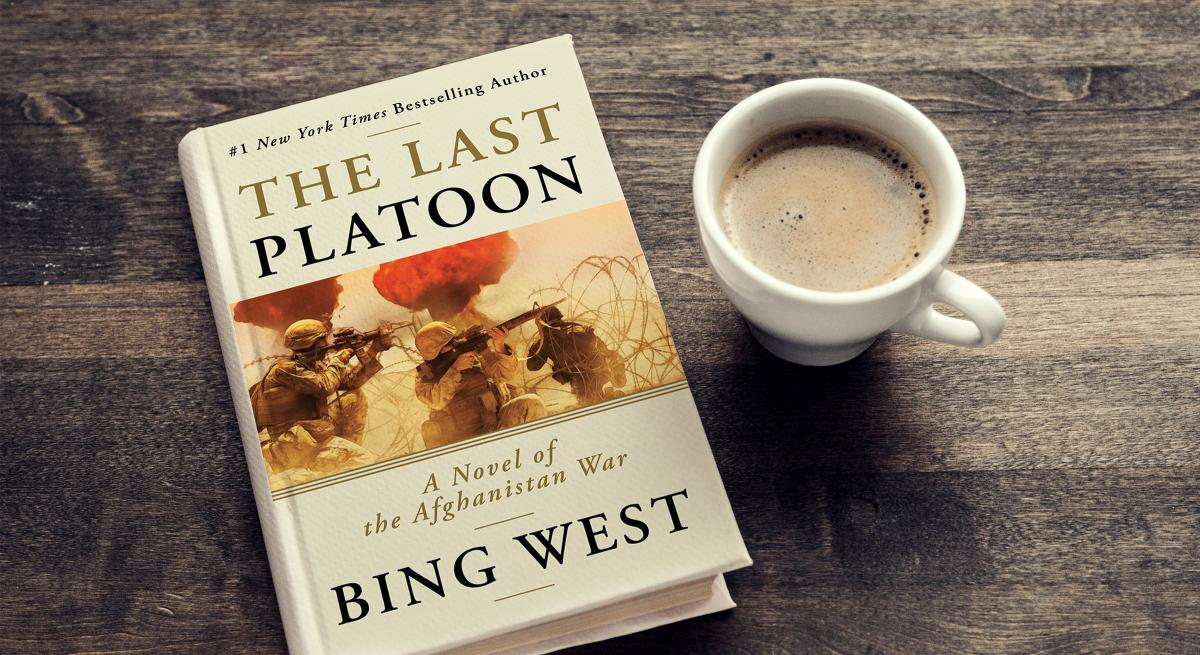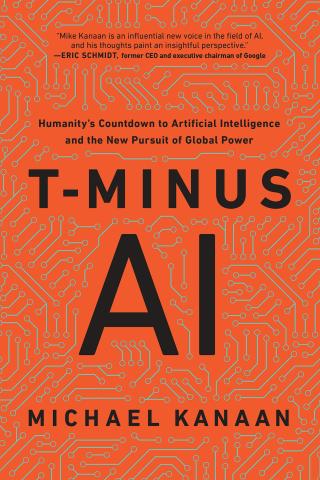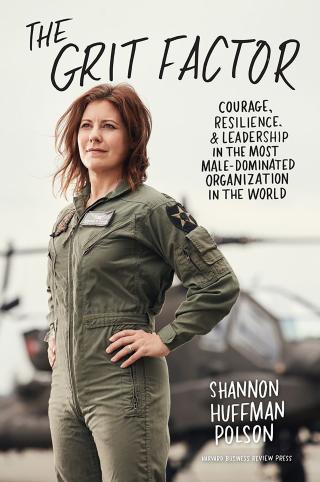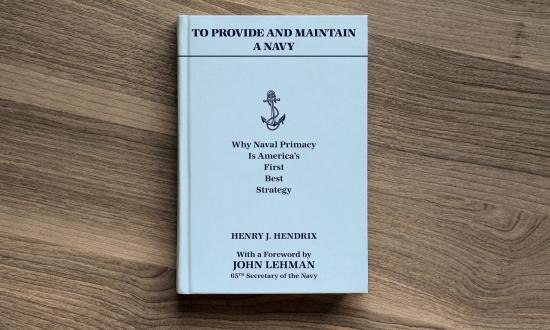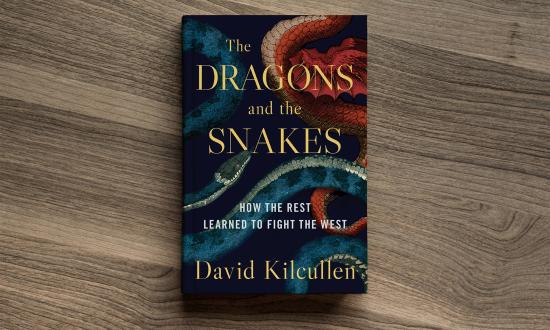The Last Platoon: A Novel of the Afghanistan War
Bing West. New York: Bombardier Books, 2020. 400 pp. $28.
Reviewed by Lieutenant Colonel Dillon Fishman, U.S. Marine Corps Reserve
As America’s longest war, the war in Afghanistan is not only familiar to most military members, but it also has spawned a considerable body of literature. Yet, in his most recent book, Bing West uses page-turning writing and intense action as a clever vehicle through which to convey new insights about combat, Afghan culture, and military leadership.
The novel covers a weeklong operation in which a Marine task force deploys to provide artillery support for an Afghan-led clearing operation. It opens with protagonist Captain Diego Cruz, a decorated mustang grunt, getting passed over for promotion. Cruz’s former commander, now a three-star, calls in a favor. Cruz thus joins a short mission in hopes of earning a promotion. But the unit’s commander—an ambitious and insecure administrator named Colonel Coffman, out on his first deployment and hungry for a star—clashes with Cruz.
Vivid descriptions of squads on patrol, hand-to-hand combat, and small-unit tactics create a graphic and engrossing read. Throughout the intense action, West weaves a tapestry of ethnic, religious, and tribal allegiances and heritage. Such complex rivalries and loyalties in Afghanistan, Pakistan, and Iran have confounded outsiders for generations.
Leadership lessons abound, with fodder for leaders from the tactical to the strategic level. West ably illustrates the quintessential Marine Corps priority of mission command—allowing autonomous decision-making at the lowest level. Noncommissioned officers tasked with leading patrols exhibit initiative and ingenuity in a complicated environment featuring disguised terrorists, civilian farmers, and improvised explosive devices. Having to risk civilian casualties, troops who want to “double-tap” downed enemy soldiers, and the temptation to mislead senior leaders about operations plans capture realistic ethical decision points that routinely challenge small-unit leaders in combat. Indeed, such dilemmas continue to form the backbone of ethics case studies used to educate midshipmen at the U.S. Naval Academy and elsewhere.
A second leadership lesson arises from the contrast between the unabashed careerism of Coffman and the selfless service of Cruz. Their clashes highlight a lamentably common problem in the officer ranks; but West does not neatly resolve the matter. While Coffman does not ultimately prosper,
neither does Cruz. The lingering tension raises larger questions about the effectiveness of a system that may incentivize self-interest over demonstrated courage and capability in combat. Ultimately, readers are left to grapple with a troubling rendering of imperfect outcomes and to question the extent to which hypocrisy may afflict military talent management. Such issues are certain to resonate.
A final leadership lesson concerns the civil-military dimension of warfare and the influence of politics on military decision-making. With continued discussions of drawdowns in Europe, Iraq, and Afghanistan, West’s choice to frame the book against the backdrop of senior leaders squabbling over potential political fallout from long deployments and troop numbers seems particularly apt. Ongoing disagreements over the necessity for strong civilian control of the military, and debates about how best to accomplish it, demonstrate how the book’s problems transcend the plotline and retain relevance.
The book’s best qualities are its readability and versatility. Despite its gritty façade and infantry centricity, it advances professional military education and is recommended as an introduction for military members of all ranks and occupational specialties deploying to the region. Further, its ethical and leadership material is especially suitable
for junior officers and noncommissioned officers.
Lieutenant Colonel Fishman, a Marine Corps judge advocate, is completing a PhD in leadership studies. He deployed twice to Afghanistan and once on board the USS Tortuga (LSD-46).
T-Minus AI: Humanity’s Countdown to Artificial Intelligence and the New Pursuit of Global Power
Michael Kanaan. Dallas, TX: BenBella Books, 2020. 270 pp. Notes. Index. $27.95.
Reviewed by Lieutenant Brandon Karpf, U.S. Navy
A cursory review of the technology section in most major news sources yields dozens of articles touting the same earth-shattering inevitabilities about artificial intelligence (AI): Artificial intelligence is coming or has already arrived; society will never be the same; privacy is dead and data is legion; the race to a superhuman AI is the new global arms race; there are untold riches and immense power in automation; computers are replacing the foundations of society. On and on they go, carrying our collective anxieties. What these commentators fail to acknowledge is the steady march of technology and society, hand in hand, since the dawn of humankind. For example, I need never shop for toilet paper again—it simply arrives in the right place and at the right time. Quite a pleasant convenience in the age of rampant pandemics.
In T-Minus AI, Michael Kanaan attempts to accomplish this same reckoning, albeit with more flair. He seeks to give artificial intelligence a context, both historical and technological. He tries to provide a common foundation, a simple lexicon, and a basic understanding of where it came from, what it can do, and where it is going. Kanaan attempts to give the reader a sense of scope and perspective regarding automation in the global society. He endeavors to turn those fundamentals into a discussion of ethics, societal mores, and philosophical principles. His goals are admirable, if a bit grandiose. Unfortunately, he misses the mark.
He does not miss it by much, but enough to be noticeable. He attempts to do too much with too little—too little space and too little focus. His ubiquitous cross-references to other sections, events, and ideas make the reading disjointed and feel disorganized. Although the book follows a logical structure, Kanaan jumps from topic to topic, covering thousands of years of history and dozens of complex events and technologies (sometimes in the span of a single page). The technologist will be left disappointed by the book’s superficiality, and the layperson will gain only the vaguest crumb of meaningful new knowledge. This begs the question: Who is the intended audience? Honestly, I am not sure.
There’s no doubt Kanaan is a well-respected authority on AI policy in government circles, and I am sure his expertise is valuable for those purposes. But this is not the authoritative “People’s Guide to AI” that he sought to write. It does not deep-dive into AI, humanity, or global power. It’s the syllabus intro essay for “AI and Society 101.” The book is worth a quick skim, but if you want useful knowledge, you need to actually take the course.
Lieutenant Karpf is a Navy cryptologic warfare officer. He is the information warfare officer on board the USS Boxer (LHD-4) in San Diego, California.
Stopping Military Suicides
Kate Hendricks Thomas and Sarah Plummer Taylor. Santa Barbara, CA: Praeger, 2020. 167 pp. Appxs. Refs. Index. $39.
Reviewed by First Lieutenant James Winnefeld, U.S. Marine Corps
The United States loses more veterans to suicide each year than it does active-duty members deployed to war zones, and at a much higher rate than the general population. Service members and veterans are reluctant to self-identify—let alone recognize—a mental health issue because of the crushing burden of stigma. Sleep disorders, pain issues, over-prescription of pharmaceuticals, and a pandemic that inhibits connections to community only exacerbate the problem. Despite well-intentioned and worthwhile prevention efforts, a persistently high rate of military suicides indicates we are not doing enough.
In Stopping Military Suicides, authors Kate Hendricks Thomas and Sarah Plummer Taylor provide a refreshing take on how to better prepare service members to manage mental health challenges that can lead to suicide. Based on extensive research, the authors suggest a multifaceted approach that begins long before a service member experiences a traumatic, life-changing event. In navigating the three pillars of the often-hackneyed term “resilience,” the book successfully advocates a community-based approach that centers on the individual veteran or service member.
What separates this book from others on military and veteran suicides is the authors’ ability to present this problem in a digestible way, geared toward service members themselves. The authors, two former Marines, clearly understand their target audience, wrapping their insights in military speak and end-of-section summaries that resemble fragmentary orders. In a refreshing bit of stigma-countering candor, the authors begin by relating their own struggles with mental health and suicidal ideation. Their stories are not only poignant in their honesty, but also serve to connect the authors on a personal level. What ensues is not a lecture or academic discussion, but a conversation.
In true Marine fashion, the authors move on by “framing the battlespace” as an introduction to military mental health and suicide. Rather than bogging the reader down, Thomas and Taylor enable a clear and concise understanding of the issues and complexities surrounding mental health. Their description of the three pillars of resiliency—self-care, social support, and spiritual practice—are presented against the backdrop of the authors’ own experiences and supported by in-depth research. In the process, they provide useful, community-based examples for how veterans and active-duty personnel can find tools to build resiliency in their own lives.
Stopping Military Suicides is equal parts a self-help, suicide awareness, and resiliency tool book. It should be read with an open mind, as many of the authors’ proposed techniques and solutions—such as the benefits of yoga on mental health—may counter the traditional military culture of toughness and bravado. While the book does not claim to be the only answer to stopping military suicides, its useful advice is a valuable component to a larger solution. Leaders and health care professionals in both the active-duty and veteran community will benefit their constituents by absorbing and applying its caring and clearly presented advice.
First Lieutenant Winnefeld is an artillery officer with 2d Battalion, 11th Marines. He has deployed once to Iraq in support of Operation Inherent Resolve.
The Grit Factor: Courage, Resilience, and Leadership in the Most Male-Dominated Organization in the World
Shannon Huffman Polson. Boston: Harvard Business Review Press, 2020. 240 pp. Notes. Index. $28.
Reviewed by Colonel Maria J. Pallotta, U.S. Marine Corps
Shannon Huffman Polson’s The Grit Factor is a useful handbook for professional women, especially those early in their careers and those still figuring out their career path. With a military bent, this book is especially appropriate for female junior officers in the military, but any woman working in a male-dominant industry, or those aspiring to one day, will benefit from the advice and lessons. One chapter in particular, “Listen Like a Leader,” is a recommended read for all leaders in all industries, especially those in senior ranks—where time is limited, but listening becomes even more important.
A former Apache pilot, English major, entrepreneur, community activist, and a mom, Polson expresses herself well and breaks down the building blocks of assembling a successful career. End-of-chapter exercises have readers compile the highlights of their lives and accomplishments into a sort of story to discover what is most important to them. Subsequent exercises uncover readers’ purpose in life—the essential foundation to a fulfilling career.
Other effective chapters explain in detail how to set up your network—trusted peers, mentors, protégés, and role models. Assembling a network of quality people is another essential building block to a successful career, and Polson shows the reader how to put together a constellation of people to enable such success.
Throughout the book, Polson illustrates this advice with interview vignettes of successful, pioneering military women who blazed the trail for the rest of us—women who joined during the Vietnam era and after—and also includes the story of the first of the women Air Force service pilots (WASPs). Each story is peppered with descriptions of resilience and how to build grit.
Interestingly, the book does not define grit until the final chapter, only describing facets of it in earlier chapters. The book would be set up more effectively if she provided the definition early on—the “dogged determination in the face of difficult circumstance . . . [sometimes requiring] creativity in its execution.”
Colonel Pallotta is the director of the U.S. Naval Academy’s Center for Experiential Leadership Development and teaches leadership and ethics to midshipmen. She holds a master’s degree in English and is a doctoral candidate in education at George Mason University.
Caesar’s Great Success: Sustaining the Roman Army on Campaign
Alexander Merrow, Agostino von Hassell, and Gregory Starace. Yorkshire, UK: Pen & Sword, 2020. 154 pp. Index. Notes. Biblio. $34.95.
Reviewed by Lieutenant Colonel Robert L. Bateman, U.S. Army (Retired)
This is a good book for military professionals and academic specialists dealing with the Roman era, any period. The thesis is not only was Caesar a genius on the battlefield, but also his accumulated logistical acumen was central to his overarching success, not only during his Gallic campaigns, but also during the civil wars that led to his claiming the title of emperor. Yet, it seems to claim a little too much for the genius of Julius Caesar. Fortunately, the book is written to standards that make it possible for discerning readers to make their own evaluations. The authors are quite upfront about the paucity of materials they have to directly support their thesis, so one can perhaps give them the benefit of the doubt and move on to evaluate their claims, given the materials they present as evidence.
Personally, as a 25-year infantry professional and academic historian, I was excited about the chance to read and review this work. As a professor at West Point, I repeatedly made my cadets aware of the truism, “Tactics wins battles, but logistics wins wars.” Sadly, so often in the modern era, U.S. tacticians assume this away.
The book is unique in more ways than one. For starters, it opens, and all chapters close, with recipes. Ancient or re-created, they are things you can try to make in your own kitchen. You don’t see this sort of thing except in the tiny subset of what can only be called “fan cookbooks” among the devotees of either Patrick O’Brian or J. K. Rowling. And one can probably count on one hand the number of books written by three authors. Here are two academics and one Marine Corps lieutenant colonel (who is also a Roman era reenactor), and they obviously know each other well. The chapters are not individually attributed and all three authors share equal billing.
The limitations, as noted, stem from the undeniable paucity of primary sources. Logistics in the Roman Republic and Empire are well established, but these relate to fixed sites, such as Hadrian’s Wall and its ilk. Sources on campaign logistics, let alone archaeological evidence, scarcely exist. Caesar himself only hinted at these topics in his writing, so it is a bit of a reach for the authors, but they do have one thing going for them: It is undeniable that without solid logistics, Caesar could not have done what he did—particularly noting the deliberate scorched-earth tactics his opponents waged when retreating before him.
In the end, this is a book all logisticians, and all professional combat element officers, on land or sea, should read. It is not as inexpensive as its length would suggest, but that is British publishing. Bite the bullet and add this to your professional library. You do not need it to teach logistics to win wars, but you do need it to understand why, and how, logistics have always won them.
Lieutenant Colonel Bateman is a live-aboard oceanic sailor and academic military historian who sails into Annapolis flying a Go Army/Beat Navy flag high on his backstay. Having served in Afghanistan, he likes goats, for dinner.



